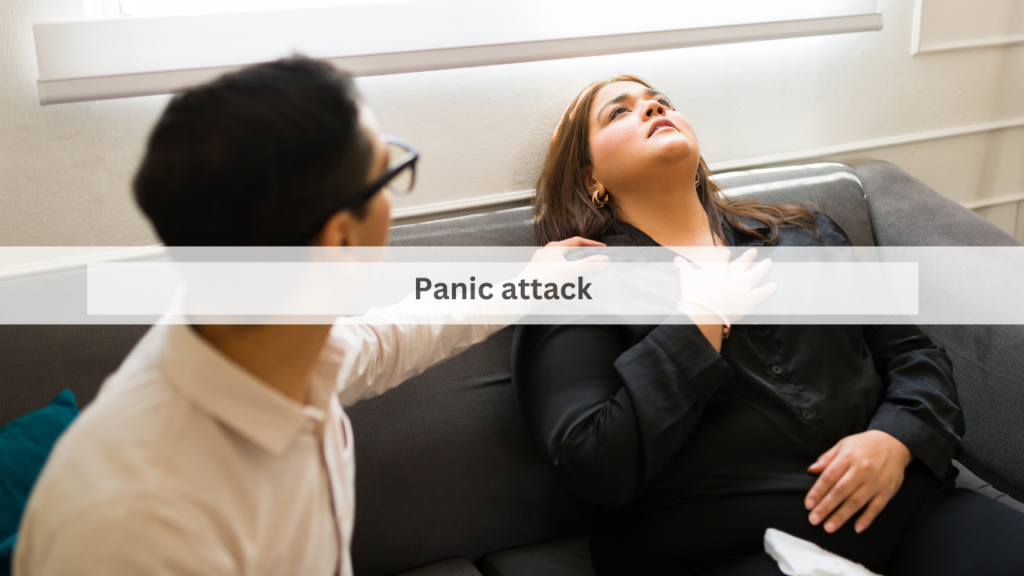Understanding Panic Attacks: Symptoms, Causes, and Treatments

Panic attacks are sudden, intense surges of fear, anxiety, or discomfort that can be overwhelming and debilitating. They typically reach their peak within minutes and can be accompanied by a variety of physical and emotional symptoms. Understanding the nature of panic attacks, their causes, and available treatments can help individuals manage this condition more effectively.
Symptoms
The symptoms of panic attacks are varied and can often mimic those of serious medical conditions, which can be particularly frightening for those experiencing them. Common symptoms include:
- Rapid Heartbeat: Many people report feeling like their heart is pounding or racing.
- Sweating: Excessive sweating, even in the absence of physical exertion or high temperatures.
- Trembling or Shaking: A noticeable physical tremor or shake, often in the hands.
- Shortness of Breath: A feeling of being unable to breathe deeply or catch one’s breath.
- Chest Pain: Pain or discomfort in the chest, which can be mistaken for a heart attack.
- Nausea: A feeling of sickness or a queasy stomach.
- Dizziness or Lightheadedness: A sensation of being unsteady or about to faint.
- Numbness or Tingling: Often felt in the hands, feet, or face.
- Chills or Hot Flashes: Sudden changes in body temperature.
- Fear of Losing Control or Dying: An intense fear that something catastrophic is happening.
Causes
The exact cause of panic attacks is not fully understood, but it is believed to be a combination of genetic, biological, environmental, and psychological factors.
- Genetics: There is evidence that panic attacks and panic disorder can run in families, suggesting a hereditary component.
- Brain Chemistry: Imbalances in neurotransmitters, the chemicals in the brain that transmit signals between nerve cells, are thought to play a role.
- Stress: Significant stress, whether acute or chronic, can trigger panic attacks. This includes major life changes, such as the loss of a loved one, divorce, or job loss.
- Personality: People with certain personality traits, such as high sensitivity to stress or a tendency to experience negative emotions, may be more prone to panic attacks.
- Medical Conditions: Some medical conditions, such as thyroid problems, heart issues, or respiratory disorders, can cause symptoms that may trigger panic attacks.
Treatments
Fortunately, there are several effective treatments for panic attacks. These treatments can help reduce the frequency and severity of attacks and improve overall quality of life.
- Cognitive-Behavioral Therapy (CBT): This type of therapy is considered the most effective treatment for panic attacks. It focuses on changing the thought patterns and behaviors that contribute to panic. CBT helps individuals understand the nature of panic attacks, challenge their fears, and gradually expose themselves to panic-inducing situations in a controlled manner.
- Medication: Several types of medications can be used to treat panic attacks, including selective serotonin reuptake inhibitors (SSRIs), benzodiazepines, and beta-blockers. These medications can help manage the symptoms of panic attacks and reduce their frequency.
- Lifestyle Changes: Regular exercise, a healthy diet, adequate sleep, and stress management techniques such as mindfulness and meditation can all help reduce the likelihood of panic attacks.
- Support Groups: Joining a support group can provide individuals with a sense of community and shared experience, which can be comforting and reduce feelings of isolation.
Panic attacks can be incredibly distressing, but understanding their symptoms, causes, and treatments can empower individuals to take control of their condition. With the right combination of therapy, medication, lifestyle changes, and support, those who suffer from panic attacks can lead healthy, fulfilling lives. If you or someone you know is struggling with panic attacks, it is important to seek professional help to develop an effective treatment plan.








